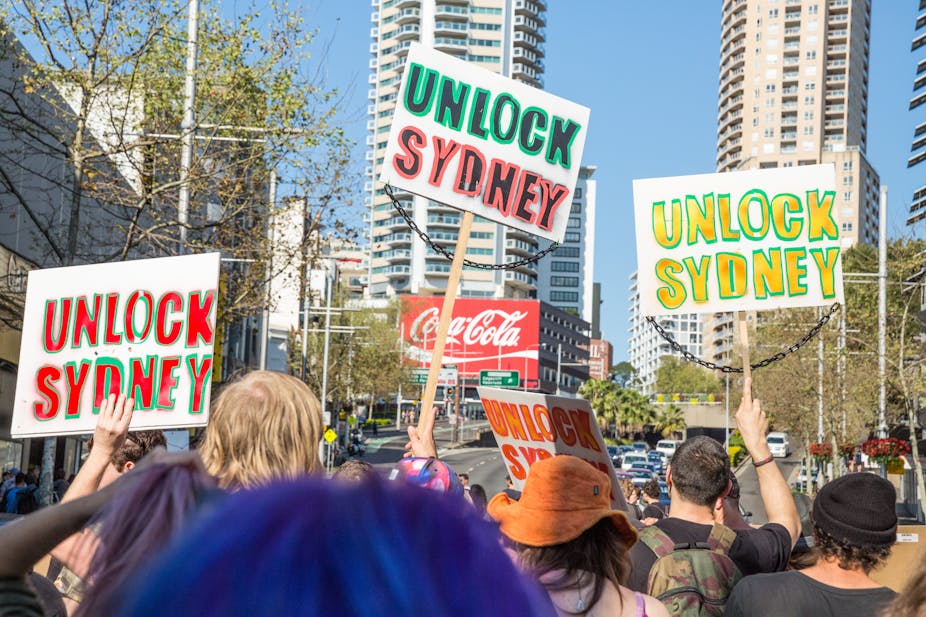The Sydney “lockout laws” have created significant debate about whether crime is being reduced, if it is being pushed into surrounding areas, and what the impacts are on local residents.
My research with Georgia Perks found that, despite reports of increased violence in these areas surrounding the lockout zone, the benefit outweighs the costs for local residents.
Read more: Where are they now? What public transport data reveal about lockout laws and nightlife patronage
Our analysis of rental prices shows a small decline immediately after the lockout laws came into effect in February 2014. Since then, rents in these areas have outstripped other comparable areas in Sydney.
This shows that residents of areas affected by the lockout are benefiting from new entertainment hubs and a nightlife economy that have sprung up since the lockout laws took effect.
The impact of the lockout laws on crime
The lockout law prohibits people entering hotels, registered clubs, nightclubs and karaoke bars after 1.30am in several areas of Sydney’s CBD (also called the Sydney Entertainment Precinct). These venues also have to stop serving alcohol after 3am.
This law is a type of “geographically targeted crime control”. This means it targets “hot spots”, rather than the root cause of the crime.
If we are simply concerned about crime reduction, there are now several studies that show the lockout laws have substantially reduced the amount of alcohol-related violence and injuries in the targeted areas.
Restrictions on alcohol access have also been shown to work elsewhere, notably in Western Australia, Newcastle, and Queensland. Outside of Australia, this has been shown to work in the United States, Sweden, and the Netherlands.
So there is sufficient evidence to support the effectiveness of restrictions like the lockout laws in reducing crime in the targeted areas. But the research also shows increased violence in neighbouring areas, suggesting crime has moved.
An important question is whether increased nightlife in these surrounding areas outweighs the cost of increased crime, and what is more important to local residents.
Weighing up the lockout laws
A standard way to quantify the pros and cons of a policy like the lockout laws to local residents, and to weigh up factors such as crime and added entertainment venues, is to look at housing market data.
When they make their decisions, potential buyers and sellers take into account information such as local crime and amenities (schools, entertainment venues, etc). Market prices then reflect this information and decision-making. If the average price in an area increases that means the value of living in that area has increased, taking all factors into consideration.
Read more: Lockout laws repeat centuries-old mistake of denying value of cities as messy places
Using this logic, we studied rental prices in areas surrounding the target areas for the lockout laws. More data is available on rental prices in the short run than house prices, so it is useful to study the immediate market response to new policies.
We collected prices both before and after the lockout law took effect, and compared areas in Sydney that have entertainment venues such as Newtown and Pyrmont (the “displacement area”) with areas that don’t, such as Alexandria, Chippendale, and Rozelle (the “control area”).
Our results show that there was a relatively small drop in rental prices of smaller dwellings (most likely to be on the main roads surrounding entertainment venues) in areas neighbouring the lockout, but this effect was weak and short-lived. This indicates that the market responded negatively to the increased crime being displaced from lockout areas, but this sentiment dissipated quickly.
On the other hand, we observe a greater, positive effect for larger dwellings. These are most likely to be off the main roads, having some separation from the noise and lights of the entertainment hubs but still near the nightlife. This phenomenon persisted throughout our study period, as shown in the following chart.
The trend in the displacement area outweighed the trend in the control area. This difference after the implementation of the laws is statistically significant.
Overall our research strengthens the idea that the lockout laws are effective in controlling alcohol-fuelled crime and violence. Data show that crime and violence in displacement areas increased by a much smaller amount than the reduction in the lockout areas. This means residents in the displacement areas are actually better off due to new access to entertainment venues and the nightlife economy.
However, this is not a full endorsement of the lockout laws. Neither our research nor earlier studies have investigated the business side of the lockout laws and the impact on the nightlife economy. There are likely to be forgone profits and lost jobs in targeted areas, as well as extra profits and new job opportunities in the displacement areas.
Similarly, we should study the gains and losses of non-resident late-night partygoers. The loss of nightlife and live entertainment culture in the target area was continuously highlighted in the debate.
These concern have influenced a recent relaxation in the lockout laws for establishments that provide “genuine live entertainment”. Is this the right decision? We have a strong evidence of the effectiveness of the Sydney lockout laws in crime prevention. What we need is further evidence of the effects on these other groups.
This research and article included contributions from Georgia Perks.

